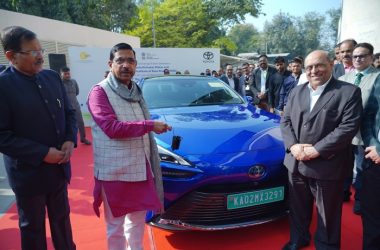In a major leap toward safer and smarter roadways, India is rapidly expanding its Intelligent Traffic Management System (ITMS) across key highways and urban corridors, backed by a strong legal framework and cutting-edge technology.
Under the Motor Vehicles (Amendment) Act, 2019, the government mandated the installation of electronic monitoring and enforcement systems on National Highways, State Highways, and urban roads in cities with populations exceeding one million. Building on this, the Ministry of Road Transport & Highways rolled out detailed rules in August 2021, targeting high-risk and high-density traffic zones.
The rule defines a range of electronic enforcement devices—from speed cameras and CCTV to Automatic Number Plate Recognition (ANPR), speed guns, and AI-integrated systems. These are designed to detect violations, manage incidents, and ensure swift response times.
The Advanced Traffic Management System (ATMS), already operational on critical corridors such as the Delhi-Meerut Expressway, Eastern Peripheral Expressway, and Trans-Haryana Expressway, plays a central role. Managed by the National Highways Authority of India (NHAI), ATMS includes features like AI-based Video Incident Detection and Enforcement Systems (VIDES), real-time video surveillance, dashboard cameras, and body-worn cameras for enforcement personnel.
In a forward-looking move, NHAI revised the ATMS specifications on October 10, 2023, detailing integration with digital platforms like Rajmarg Yatra and NHAI One, and enabling API-based e-challan systems for seamless enforcement.
“The government is committed to leveraging technology to make Indian roads safer and more efficient,” stated Union Minister for Road Transport and Highways, Nitin Gadkari, in a written reply to the Rajya Sabha.
The ATMS is now a mandatory inclusion in new highway projects, especially in high-speed and high-density corridors. It is also being deployed as standalone upgrades in existing infrastructure, signaling a nationwide digital transformation of India’s road safety ecosystem.
As India accelerates toward a future of smart mobility, the convergence of legislation, technology, and infrastructure is laying the foundation for safer, cleaner, and more intelligent roads.





